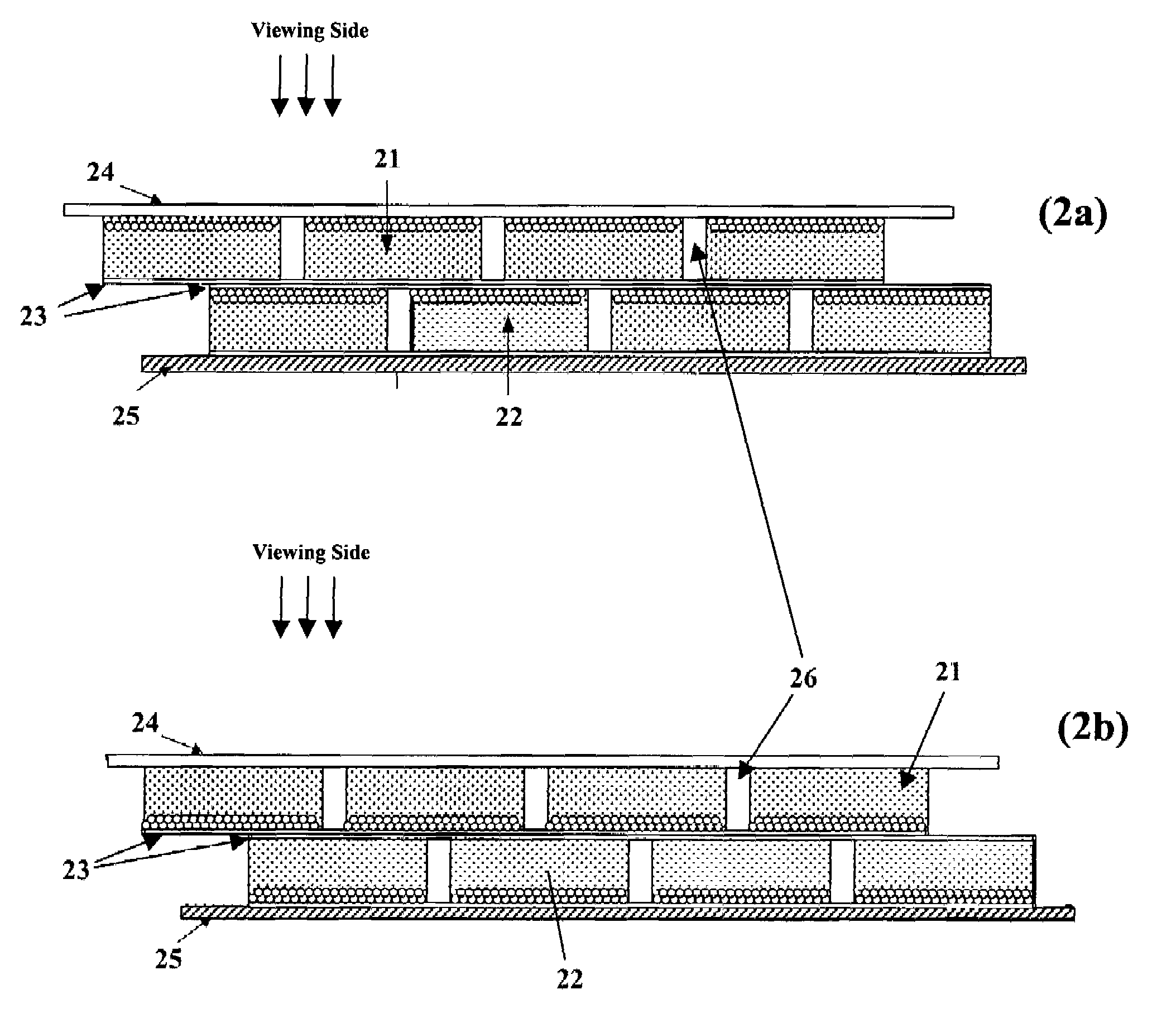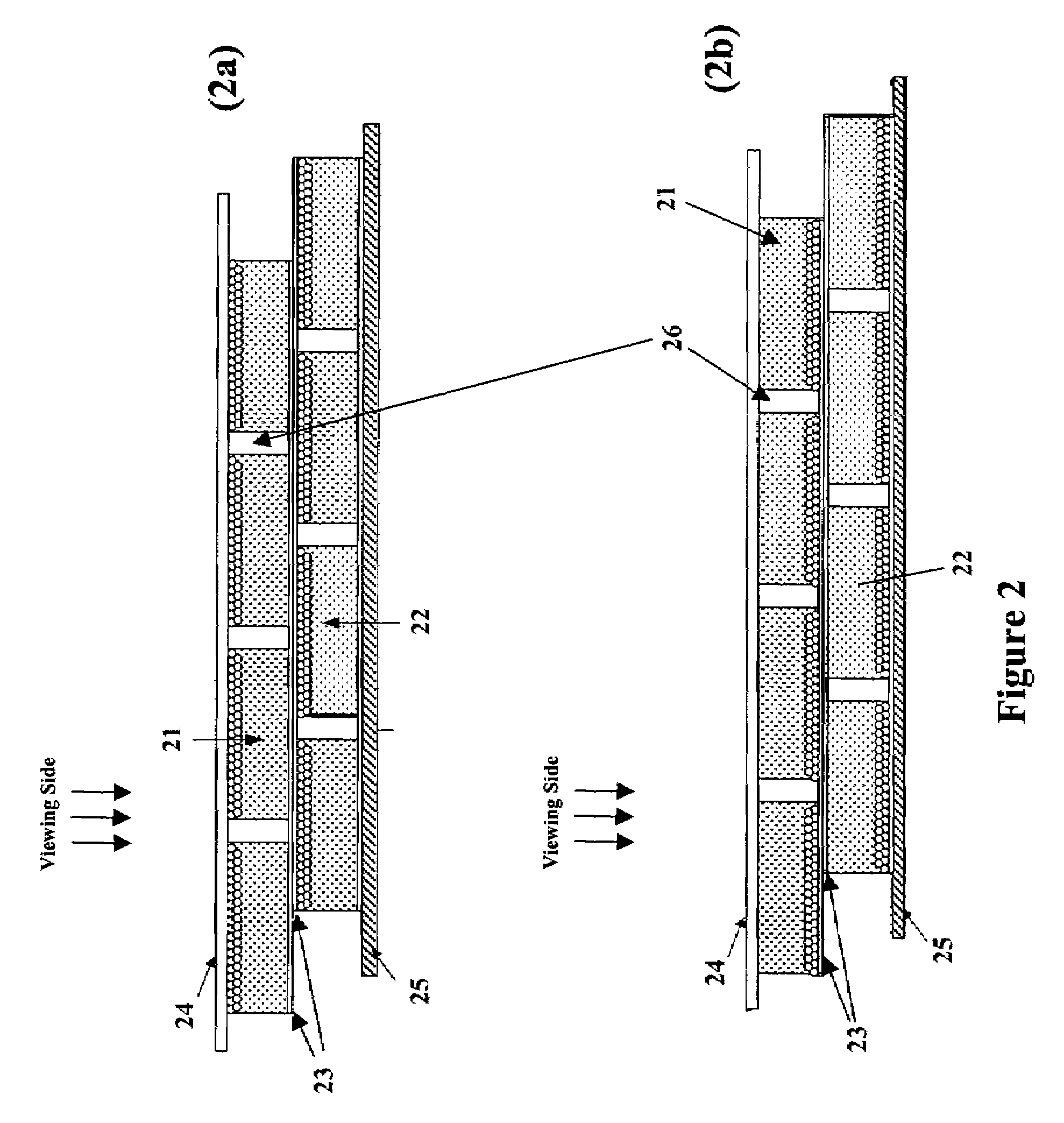Electrophoretic display and novel process for its manufacture
a technology of electrophoretic display and dmin state, applied in the field of electrophoretic display, can solve the problems of undesirable particle movement or sedimentation, particularly in the longitude direction, and the difficulty of separating the suspension of different colors from each other in the electrophoretic display partition type, etc., to achieve the effect of improving reflectivity, improving contrast ratio, and improving reflectivity
- Summary
- Abstract
- Description
- Claims
- Application Information
AI Technical Summary
Benefits of technology
Problems solved by technology
Method used
Image
Examples
examples
[0081]The following examples are given to enable those skilled in the art to more clearly understand and to practice the present invention. They should not be considered as limiting the scope of the invention, but merely as being illustrative and representative thereof.
preparation 1
Synthesis of a Multifunctional Reactive Protective Colloid Rf-amine
[0082]
[0083]17.8 Gm of Krytox® methyl ester (DuPont, 17.8 g, MW=about˜1780, g=about 10, DuPont) was dissolved in a solvent mixture containing 12 gm of 1,1,2-trichlorotrifluoroethane (Aldrich) and 1.5 gm of α,α,α-trifluorotoluene (Aldrich). The resultant solution was added drop by drop into a solution containing 7.3 gm of tris(2-aminoethyl)amine (Aldrich) in 25 gm of α,α,α-trifluorotoluene and 30 gm of 1,1,2-trichlorotrifluoroethane over 2 hours with stirring at room temperature. The mixture was then stirred for another 8 hours to allow the reaction to complete. The IR spectrum of the crude product clearly indicated the disappearance of C═O vibration for methyl ester at 1780 cm−1 and the appearance of C═O vibration for the amide product at 1695 cm−1. Solvents were removed by rotary evaporation followed by vacuum stripping at 100° C. for 4–6 hours. The crude product was then dissolved in 50 ml of PFS2 solvent (low mole...
preparation 2
Preparation of TiO2-Containing Microcapsules
[0085]9.05 Gm of Desmodur® N3400 aliphatic polyisocyanate (from Bayer AG) and 0.49 gm of triethanolamine (99%, Dow) were dissolved in 3.79 gm of MEK. To the resultant solution, 13 gm of TiO2 R706 (DuPont) was added and homogenized for 2 minutes with a rotor-stator homogenizer (IKA ULTRA-TURRAX T25, IKA WORKS) at ambient temperature. A solution containing 1.67 gm of 1,5-pentanediol (BASF), 1.35 gm of polypropylene oxide (molecular weight 725, from Aldrich), 2.47 gm of MEK and 0.32 gm of a 2% dibutyltin dilaurate (Aldrich) solution in MEK was added and further homogenized for 2 minutes. In the final step, 0.9 gm of Rf-amine 4900 prepared from Preparation 1 in 40.0 gm of HT-200 (Solvay Solexis) was added and homogenized for 2 minutes, followed by addition of additional 0.9 gm of Rf-amine 4900 in 33.0 gm of HT-200 and homogenization for 2 minutes. A low viscosity microcapsule dispersion was obtained.
[0086]The microcapsule dispersion obtained w...
PUM
 Login to View More
Login to View More Abstract
Description
Claims
Application Information
 Login to View More
Login to View More - R&D
- Intellectual Property
- Life Sciences
- Materials
- Tech Scout
- Unparalleled Data Quality
- Higher Quality Content
- 60% Fewer Hallucinations
Browse by: Latest US Patents, China's latest patents, Technical Efficacy Thesaurus, Application Domain, Technology Topic, Popular Technical Reports.
© 2025 PatSnap. All rights reserved.Legal|Privacy policy|Modern Slavery Act Transparency Statement|Sitemap|About US| Contact US: help@patsnap.com



